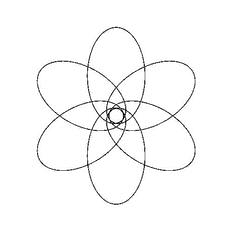
Elementary general relativity PDF
Preview Elementary general relativity
Elementary General Relativity Version 3.35 Alan Macdonald Luther College, Decorah, IA USA mailto:[email protected] http://faculty.luther.edu/∼macdonal (cid:13)c To Ellen “Themagicofthistheorywillhardlyfailtoimposeitselfonanybody who has truly understood it.” Albert Einstein, 1915 “The foundation of general relativity appeared to me then [1915], and it still does, the greatest feat of human thinking about Nature, themostamazingcombinationofphilosophicalpenetration,physical intuition, and mathematical skill.” Max Born, 1955 “One of the principal objects of theoretical research in any depart- mentofknowledgeistofindthepointofviewfromwhichthesubject appears in its greatest simplicity.” Josiah Willard Gibbs “Thereisawidespreadindifferencetoattemptstoputacceptedthe- ories on better logical foundations and to clarify their experimental basis, an indifference occasionally amounting to hostility. I am con- cerned with the effects of our neglect of foundations on the educa- tion of scientists. It is plain that the clearer the teacher, the more transparent his logic, the fewer and more decisive the number of ex- periments to be examined in detail, the faster will the pupil learn and the surer and sounder will be his grasp of the subject.” Sir Hermann Bondi “Things should be made as simple as possible, but not simpler.” Albert Einstein Contents Preface 1 Flat Spacetimes 1.1 Spacetimes .......................................................11 1.2 The Inertial Frame Postulate .....................................14 1.3 The Metric Postulate .............................................18 1.4 The Geodesic Postulate ...........................................25 2 Curved Spacetimes 2.1 History of Theories of Gravity ....................................27 2.2 The Key to General Relativity ....................................30 2.3 The Local Inertial Frame Postulate ...............................34 2.4 The Metric Postulate .............................................37 2.5 The Geodesic Postulate ...........................................40 2.6 The Field Equation ...............................................43 3 Spherically Symmetric Spacetimes 3.1 Stellar Evolution ..................................................49 3.2 The Schwartzschild Metric ........................................51 3.3 The Solar System Tests ...........................................56 3.4 Kerr Spacetimes ..................................................60 3.5 The Binary Pulsar ................................................62 3.6 Black Holes .......................................................63 4 Cosmological Spacetimes 4.1 Our Universe I ....................................................66 4.2 The Robertson-Walker Metric ....................................69 4.3 The Expansion Redshift ..........................................71 4.4 Our Universe II ...................................................73 4.5 General Relativity Today .........................................79 Appendices ..........................................................81 Index ...............................................................101 Preface The purpose of this book is to provide, with a minimum of mathematical machinery and in the fewest possible pages, a clear and careful explanation of the physical principles and applications of classical general relativity. The pre- requisitesaresinglevariablecalculus,afewbasicfactsaboutpartialderivatives and line integrals, a little matrix algebra, and some basic physics. The book is for those seeking a conceptual understanding of the theory, not computational prowess. Despite it’s brevity and modest prerequisites, it is a serious introduction to the physics and mathematics of general relativity which demands carefulstudy. Thebookcanstandalone as anintroductiontogeneral relativity or it can be used as an adjunct to standard texts. Chapter1 is a self-containedintroduction to those parts of special relativity werequireforgeneralrelativity. Wetakeanonstandardapproachtothemetric, analogous to the standard approach to the metric in Euclidean geometry. In geometry, distance is first understood geometrically, independently of any coor- dinatesystem. Ifcoordinatesareintroduced,thendistancescanbeexpressedin terms of coordinate differences: ∆s2 = ∆x2+∆y2. The formula is important, but the geometric meaning of the distance is fundamental. Analogously,wedefinethespacetimeintervalofspecialrelativityphysically, independently of any coordinate system. If inertial frame coordinates are in- troduced, then the interval can be expressed in terms of coordinate differences: ∆s2 = ∆t2 −∆x2 −∆y2 −∆z2. The formula is important, but the physical meaningoftheintervalisfundamental. Ibelievethatthisapproachtothemet- ric provides easier access to and deeper understanding of special relativity, and facilitates the transition to general relativity. Chapter 2 introduces the physical principles on which general relativity is based. The basic concepts of Riemannian geometry are developed in order to express these principles mathematically as postulates. The purpose of the pos- tulates is not to achieve complete rigor – which is neither desirable nor possible in a book at this level – but to state clearly the physical principles, and to exhibit clearly the relationship to special relativity and the analogy with sur- faces. The postulates are in one-to-one correspondence with the fundamental concepts of Riemannian geometry: manifold, metric, geodesic, and curvature. Concentrating on the physical meaning of the metric greatly simplifies the de- velopment of general relativity. In particular, tensors are not needed. There is, however, a brief introcution to tensors in an appendix. (Similarly, modern elementary differential geometry texts often develop the intrinsic geometry of curved surfaces by focusing on the geometric meaning of the metric. Tensors are not used.) Thefirsttwochapterssystematicallyexploitthemathematicalanalogywhich led to general relativity: a curved spacetime is to a flat spacetime as a curved surface is to a flat surface. Before introducing a spacetime concept, its analog forsurfacesispresented. Thisisnotanewidea,butitisusedheremoresystem- atically than elsewhere. For example, when the metric ds of general relativity is introduced, the reader has already seen a metric in three other contexts. Chapter 3 solves the field equation for a spherically symmetric spacetime to obtain the Schwartzschild metric. The geodesic equations are then solved and applied to the classical solar system tests of general relativity. There is a section on the Kerr metric, including gravitomagnetism and the Gravity Probe B experiment. The chapter closes with sections on the binary pulsar and black holes. Inthischapter,aselsewhere,Ihavetriedtoprovidethecleanestpossible calculations. Chapter4appliesgeneralrelativitytocosmology. WeobtaintheRobertson- Walker metric in an elementary manner without using the field equation. We then solve the field equation with a nonzero cosmological constant for a flat Robertson-Walkerspacetime. WMAPdataallowustospecifyallparametersin thesolution,givingthenew“standardmodel”oftheuniversewithdarkmatter and dark energy. There have been many spectacular astronomical discoveries and observa- tions since 1960 which are relevant to general relativity. We describe them at appropriate places in the book. Some 50 exercises are scattered throughout. They often serve as examples of concepts introduced in the text. If they are not done, they should be read. Some tedious (but always straightforward) calculations have been omitted. They are best carried out with a computer algebra system. Some material has beenplacedinabout20pagesofappendicestokeepthemainlineofdevelopment visible. Theappendicesoccasionallyrequiremorebackgroundofthereaderthan the text. They may be omitted without loss of anything essential. Appendix 1 gives the values of various physical constants. Appendix 2 contains several approximation formulas used in the text.
